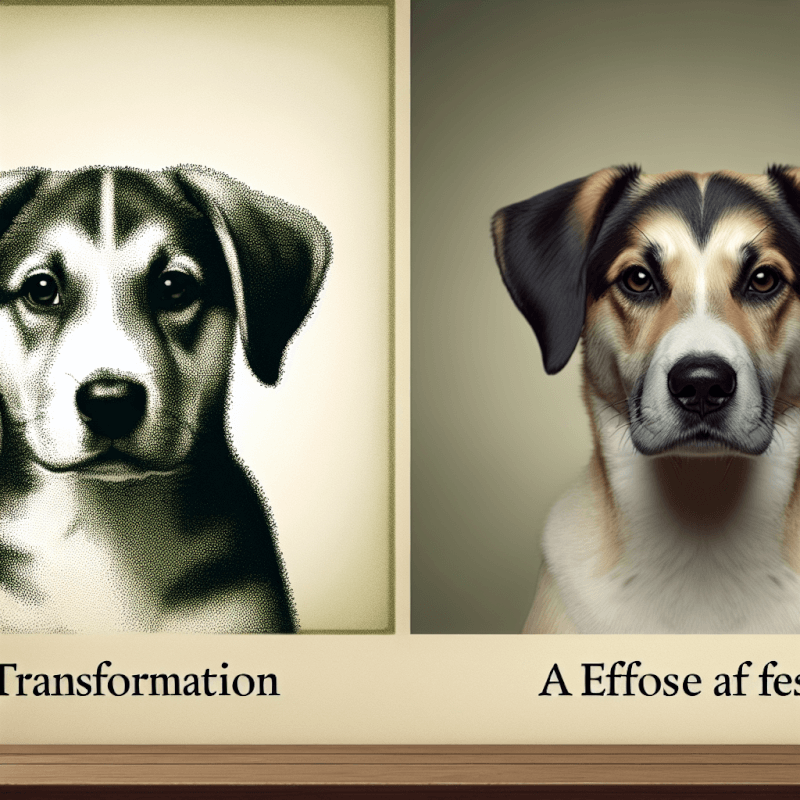If you’re struggling with your furry friend’s aggressive behavior, fear not! We’ve got the solution for you – professional dog trainers specializing in aggressive behavior. Whether your pup is displaying aggression towards other dogs or humans, these expert trainers are equipped with the skills and knowledge to help your four-legged friend overcome their aggressive tendencies and become a well-behaved companion. With their friendly and effective training techniques, you’ll soon witness a remarkable transformation in your dog’s behavior, ensuring a harmonious and peaceful coexistence for both you and your canine companion.

Understanding Aggressive Behavior in Dogs
Aggressive behavior in dogs can be alarming and challenging for both the dog owner and those who come into contact with the dog. It is important to understand the various types and causes of aggression in order to effectively address the issue. By recognizing the signs of aggressive behavior, you can take the necessary steps to provide appropriate training and support for your dog.
Ready for Cat Trivia?
Test your knowledge about cats!

Types of aggression
There are different types of aggression that dogs may exhibit, each with its own underlying reasons. These types include:
- Territorial aggression: This occurs when a dog displays aggression towards people or animals entering their perceived territory.
- Fear-based aggression: Dogs might act aggressively when they are fearful or anxious, often as a defensive behavior.
- Protective aggression: Dogs may become aggressive when they feel the need to protect their owners or property.
- Social aggression: This form of aggression occurs when dogs exhibit aggressive behavior towards other dogs or animals.
- Predatory aggression: Some dogs may display aggression that stems from their natural hunting instincts, especially towards smaller animals.
- Redirected aggression: Dogs may become aggressive towards people or animals they can’t directly access, often as a result of frustration or excitement.
Understanding the specific type(s) of aggression your dog is displaying is crucial in developing a targeted training plan.
Causes of aggression
Aggression in dogs can arise from a combination of genetic, environmental, and situational factors. Some common causes include:
- Lack of socialization: Dogs that have not been properly socialized during their critical early development stages may develop aggressive tendencies due to fear or discomfort in unfamiliar situations.
- Previous negative experiences: Dogs who have experienced abuse, neglect, or traumatic events may exhibit aggression as a defensive response to perceived threats.
- Unmet needs: Dogs that lack proper exercise, mental stimulation, or are subjected to extended periods of confinement may display aggression due to pent-up energy or frustration.
- Medical conditions: Certain medical conditions or underlying pain may manifest as aggressive behaviors in dogs, as they may become irritable or defensive.
- Resource guarding: Some dogs may show aggression when they feel the need to protect their food, toys, or personal space.
By identifying and addressing the root cause of your dog’s aggression, you can effectively work towards modifying their behavior.
Signs of aggressive behavior
Recognizing the signs of aggression in dogs is crucial for identifying and addressing the issue in a timely manner. Some common signs of aggressive behavior include:
- Growling, snarling, or snapping: This vocalization and facial expressions are clear indicators that a dog is feeling threatened and may act aggressively.
- Baring teeth: When a dog exposes its teeth by lifting its lips, it is a clear sign of aggression and potential for biting.
- Stiff body language: Dogs may display rigid or tense body postures, such as a stiff tail, raised hair, or a rigid torso, when feeling aggressive.
- Biting or nipping: The most severe form of aggression, biting or nipping can be dangerous and indicates the need for immediate training and behavior modification.
If you notice any of these signs, it is crucial to take them seriously and seek professional assistance to address the issue effectively.
Choosing a Dog Trainer for Aggressive Behavior
When dealing with aggressive behavior in dogs, it is essential to seek the guidance of a professional dog trainer who specializes in working with aggressive dogs. Here are some factors to consider when choosing a dog trainer:
Qualifications and certifications
Look for a dog trainer who has the necessary qualifications and certifications. Certifications from reputable organizations such as the Certification Council for Professional Dog Trainers (CCPDT) or the International Association of Animal Behavior Consultants (IAABC) demonstrate a commitment to professional development and adherence to ethical training standards.
Experience with aggressive dogs
Ensure that the dog trainer you choose has significant experience working specifically with aggressive dogs. Aggression requires specialized knowledge and techniques, so it is vital to find a trainer who has successfully rehabilitated aggressive dogs in the past.
Training Techniques for Aggressive Dogs
When addressing aggressive behavior in dogs, it is important to use training techniques that are both effective and humane. Here are some commonly used techniques:
Positive reinforcement
Positive reinforcement involves rewarding desired behaviors with treats, praise, or other forms of positive reinforcement. By focusing on rewarding good behavior, you can help your dog understand what is expected of them and encourage them to make positive choices.
Desensitization and counterconditioning
Desensitization and counterconditioning involve gradually exposing the dog to the triggers that provoke their aggression in a controlled and positive manner. This process helps to change the dog’s emotional response to the trigger and helps them associate it with positive experiences instead.
Clicker training
Clicker training is a form of positive reinforcement training that uses a distinct click sound to mark the desired behavior. The clicker acts as a signal to the dog that they have done something right, making it easier for them to understand what is being asked of them.
Dominance-based training
Dominance-based training techniques, such as using physical force, punishment, or alpha rolls, have been largely discredited by modern dog trainers. These methods can escalate fear and aggression in dogs and should be avoided when working with aggressive behavior.
Finding a Dog Trainer
Finding a reputable and qualified dog trainer for aggressive behavior can be challenging. Here are a few methods to help you in your search:
Referrals and recommendations
Seek referrals and recommendations from trusted sources such as veterinarians, friends, or fellow dog owners who have dealt with similar issues. Their personal experiences can provide valuable insights into the effectiveness and professionalism of different dog trainers.
Online directories
Explore online directories that specifically list dog trainers specializing in aggressive behavior. These directories often provide detailed information about the trainer’s qualifications, experience, and training methods, making it easier for you to find a suitable professional.
Local animal shelters
Contact local animal shelters or rescue organizations for recommendations. These organizations often work closely with dog trainers and can provide guidance on trainers who specialize in rehabilitating aggressive dogs.

Evaluating a Dog Trainer
Once you have identified potential dog trainers, it is crucial to evaluate their suitability for your specific needs. Consider the following steps when assessing a dog trainer:
Initial consultation
Schedule an initial consultation with the trainer to discuss your dog’s aggressive behavior, goals, and training methods. This meeting will give you a sense of the trainer’s approach and how well they understand your dog’s needs.
Observing a training session
Request to observe a training session conducted by the trainer. This will allow you to assess their training techniques, communication skills with the dog, and overall professionalism.
Talking to past clients
Ask the trainer for references or past clients who have worked with them to address aggressive behavior. Speaking with these clients can provide valuable insights into the trainer’s effectiveness and success rate.
Costs of Dog Training for Aggressive Behavior
The cost of dog training for aggressive behavior can vary depending on several factors. Consider the following elements when evaluating the cost:
Factors affecting cost
Factors that may influence the cost of dog training include the severity of the aggression, the number of sessions required, the location of the training, and the experience and qualifications of the dog trainer.
Average price range
On average, dog training for aggressive behavior can range from $100 to $200 per session. However, keep in mind that more severe cases or specialized training may require a higher investment.

Working Collaboratively with the Dog Trainer
Engaging in a collaborative and cooperative relationship with your dog trainer is vital for successful training.
Establishing clear goals
Communicate your goals and expectations clearly with the dog trainer. By establishing specific training objectives, you can track progress and ensure that the training aligns with your desired outcomes.
Consistency and reinforcement at home
Consistency in training techniques and reinforcement is crucial for effective behavior modification. Work closely with your dog trainer to understand and implement the recommended strategies consistently at home.
Involving all family members
Ensure that all family members are on board and committed to the training program. Consistency and cooperation from everyone in the household will facilitate a positive training environment for your dog.
Alternative Options for Dealing with Aggressive Behavior
In some cases, additional options and support may be necessary to address aggressive behavior in dogs. Consider the following alternatives:
Medication and behavior modification
In severe cases, medication prescribed by a veterinarian may be used to manage the dog’s aggression. Medication can be combined with behavior modification techniques to facilitate positive changes in the dog’s behavior.
Specialized training programs
Some dog trainers offer specialized training programs tailored specifically for aggressive dogs. These programs may involve intensive training sessions or boarding and training options to address severe aggression issues.
Seeking professional advice
Consulting with a veterinary behaviorist or animal behavior expert can provide valuable insights and guidance in cases of complex or severe aggression. These professionals have extensive knowledge and experience in dealing with aggressive behavior and can provide tailored treatment plans.

Progress Evaluation and Communication
Regular progress assessments and open communication with your dog trainer are essential for tracking your dog’s progress and making necessary adjustments to the training plan.
Regular progress assessments
Schedule regular progress assessments with your dog trainer to evaluate your dog’s development and address any concerns or challenges that may arise during the training process.
Open and honest communication with the trainer
Maintaining open and honest communication with the dog trainer is crucial for successful training. Share any changes or developments in your dog’s behavior or environment, as this information will help the trainer modify the training plan accordingly.
Continued Training and Maintenance
After the initial training period, ongoing training and reinforcement are necessary to maintain positive behavioral changes.
Ongoing training and reinforcement
Continue implementing the training techniques and strategies recommended by your dog trainer, even after the initial training program is complete. Consistency and reinforcement over time will help solidify the desired behaviors and minimize the chances of relapse.
Addressing setbacks and challenges
It is normal to experience setbacks or challenges during the training process. If you notice any regression in your dog’s behavior or encounter new issues, reach out to your dog trainer for guidance and support. They can provide additional training techniques or adjustments to the training plan to address any challenges that may arise.
By understanding aggressive behavior in dogs, choosing a qualified dog trainer, utilizing effective training techniques, and maintaining open communication, you can effectively address and modify aggressive behavior in your beloved canine companion. Remember that each dog is unique, and patience and consistency are key factors in successfully rehabilitating an aggressive dog. With the right guidance and support, your dog can become a happier, well-adjusted member of your family.



